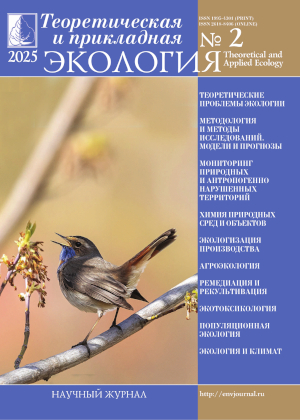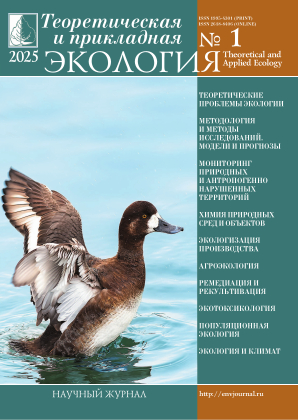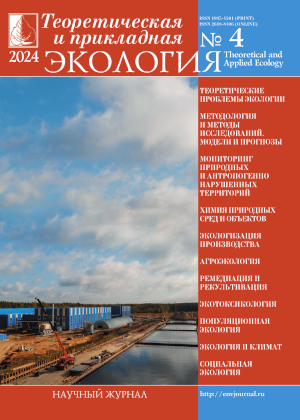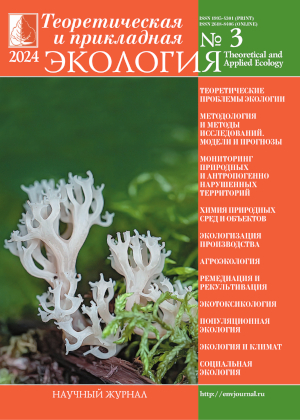 ISSN 1995-4301
ISSN 1995-4301(Print)
ISSN 2618-8406
(Online)
Online version of the journal
|
Study of adsorption separation of gas mixtures under non-stationary conditions |
||||
| F.V. Yusubov, I.A. Aliyev, S.N. Guliyev | ||||
| Section: Ecologization of industry |
||||
| The influence of the initial concentration, rate and temperature of adsorption on the adsorption separation of gas mixtures (CO2, CH4, N2, H2S) is investigated. Components: N2 – 5%, H2S – 5%, CO2 – 5% and CH4 – 85%. And as an adsorbent granule of clinoptilolite of irregular shape were used. Isothermal adsorption of CO2 was obtained at different temperatures (293, 313, and 323 K). The obtained isotherms of CO2 adsorption showed that with an increase in temperature, the adsorption of CO2 decreased. The type of isotherms corresponds to Langmuir. The output curves of gas mixture adsorption depending on the gas flow rate and various main components of CO2 were also experimentally studied. The output curves of the adsorption of the CO2 component were studied at various gas flow rates of 20, 50, and 80 mL/min. Equilibrium time increases with a decrease in the gas flow rate. Output curves were also obtained depending on the initial CO2 concentrations of 5%, 10% and 20%. It was determined that with a decrease in the initial concentration of CO2, the equilibrium time also increases. Gas mixture components sorbed downwards: H2S→CO2→CH4→N2. The resulting system of model equations describing the adsorption separation of gas mixtures in a fixed adsorbent layer represents a complete mathematical model of the process under unsteady conditions. The obtained regularities of the process of adsorption of gas mixtures testify to the fact that the process takes place under non-stationary conditions. The proposed models for the optimal design of industrial absorbers can be used for adsorption separation of gas mixtures in the conditions of their unsteady flow. | ||||
| Keywords: adsorption, gas mixture, non-stationary, mathematical model |
||||
| Article published in number 2 for 2024 DOI: 10.25750/1995-4301-2024-2-101-107 |
||||
|
||||
Drosophila melanogaster as an in vivo model for assessing the cytogenetic effects of low-intensity ionizing radiation |
||||
| E.A. Yushkova | ||||
| Section: Monitoring of natural and anthropogenically disturbed areas |
||||
| The most important target of radiation damage is the cell nucleus. Structural and functional changes occurring in the nucleus under the influence of ionizing radiation affect the development of different biological effects at the cellular and organismal levels. In the present study, the Comet assay was used which makes it possible to assess the complex of DNA damage in different somatic cells of the body. The specificity of the cytogenetic effect of irradiation in low doses in Drosophila melanogaster has been established. The observed reactions depended not only on the irradiation dose and genotype but also on the type of DNA damage and tissue. In general, neuroblasts of individuals with low synthesis of cytoplasmic superoxide dismutase (sodn1/+) showed the highest sensitivity to irradiation in low doses. With an increase in the dose of ionizing radiation, the frequency of alkali-labile sites and DNA single-strand breaks in sodn1-genotype cells increased. The repair mutant genotypes, on the contrary, had radiosensitive traits exclusively at the level of DNA double-strand breaks. To a greater extent, an increase in the yield of radiation-induced DNA damage of this type was registered in cells of the imaginal disks of individuals with defect in the mechanisms of DNA double-strand break repair (okrA17-11/+), postreplicative repair, and meiotic recombination (mei-41D5/+). The genetically unstable strains used in the work have radiosensitive features which makes them convenient models for assessing the radioecological situation in the environment. | ||||
| Keywords: Drosophila melanogaster, irradiation, cytogenetic effects, mutations in genes for repair and antioxidant protection |
||||
| Article published in number 2 for 2024 DOI: 10.25750/1995-4301-2024-2-057-062 |
||||
|
||||
Pigment system of filamentous cyanobacteria under conditions of accumulation of lead ions |
||||
| A.R. Galperina | ||||
| Section: Ecotoxicology |
||||
| The effect of Pb (CH3COO)2 solutions with Pb2+ concentrations equal to 0.02, 0.1, 0.2 and 0.4 mM to strain of cyanobacteria (CB) Leptolyngbya sp. SK was studied. The duration of exposure of the culture with solutions was 21 days. During the experiment, measured the loss of lead ions in the solution; the increase in the biomass of CB was assessed as an indicator of culture adaptation; determined the content of photosynthetic pigments as indicators of maintaining the viability of the culture. The content of lead ions decreased in all variants, the maximum decrease was 96.2% – in the medium with a Pb2+concentration of 0.4 mM. An increase in the biomass of CB was observed in the presence of Pb2+ of all concentrations, the maximum increase in a solution with a Pb2+ concentration of 0.1 mM was up to 7.5 times. There was a decrease in the content of chlorophyll a in the biomass of CB, in comparison with the control, by 67.0–94.2% with an increase in the concentration of Pb2+ in the solution. Under the influence of solutions with Pb2+ concentrations of 0.02, 0.1, and 0.4 mM, the content of carotenoids in the biomass of cyanobacteria decreased by 48%, 75% and 92%, respectively; the concentration of Pb2+0.2 mM caused an increase in the content of carotenoids by 1% with the control. The inhibitory effect of all investigated concentrations of Pb2+ was noted on the complex of phycobilin pigments. The accumulation of lead ions from solutions with Pb2+ concentrations up to 0.4 mM, an increase in CB biomass in the presence of 0.1 mM Pb2+ and an increase in the synthesis of carotenoids at 0.2 mM Pb2+ may indicate adaptation of the studied culture to lead acetate. | ||||
| Keywords: cyanobacteria, lead(II) ions, photosynthetic pigments, toxicity |
||||
| Article published in number 2 for 2024 DOI: 10.25750/1995-4301-2024-2-159-166 |
||||
|
||||
Some features of the rare endemic Arafoe aromatica Pimenov & Lavrova biology in Ritsa Strict Nature Reserve (Republic of Abkhazia) |
||||
| L.M. Abramova, I.V. Taniya, A.N. Mustafina | ||||
| Section: Population ecology |
||||
| For the first time, the features of rare endemic species of Caucasus Arafoe aromatica biology in the Ritsa Strict Nature Reserve (Republic of Abkhazia) were studied. The age, vitality structure of coenopopulations (CP) and the variability of morphometric parameters were determined. The study was carried out using standard methods of population biology. The variability of morphometric parameters was studied on 25 middle-aged plants in each CP. The CP density is low (1–2.6 ind./m2). According to the delta-omega classification, one CP is transitional, and one is mature. Most of the morphological features are characterized by a normal degree of variation (14.7–37.0%). Vitality analysis showed that one CP is prosperous, the other is depressed. The state of the studied A. aromatica coenopopulations is satisfactory. Anthropogenic disturbances lead to a decrease in the number and seed productivity, worsening conditions for seed germination and renewal processes. To preserve the rare species, it is necessary to limit the anthropogenic load in the places of growth, prohibit the collection of plants by the population, monitor and control the CP state. | ||||
| Keywords: Republic of Abkhazia, rare species, endemic, Arafoe aromatica, coenopopulation, age structure, variability, vitality |
||||
| Article published in number 2 for 2024 DOI: 10.25750/1995-4301-2024-2-193-200 |
||||
|
||||
Cytogenetic aftermath by gasoline impact on Lepidium sativum L. |
||||
| L.S. Tupicyna, E.O. Volkova, S.S. Tupitsin, Z.V. Shejkina | ||||
| Section: Ecotoxicology |
||||
| The study aimed to characterize the ecological aftermath of the impact of gasoline on biological objects. On today, oil and products from it remain one of the most common pollutants. The novelty and relevance of the study are determined by the minimum database of cytogenetic changes after impact of gasoline on biota. The registration of such consequences, as a rule, negative ones, dictates the need to develop directions and methods for the reclamation of contaminated areas.
An experimental study using a model plant object – watercress (Lepidium sativum L.) revealed the aftermath of gasoline impact. This object made it possible to identify a complex of changes determined by the gasoline. The experiment studied the effect of AI-95 gasoline in concentrations of 3, 5, 10% (water solution). For cytogenetic analysis, temporary compressed micro preparations of root sections stained with acetoorcein were examined. The anaphase method was used to account the chromosomal abnormalities. Gasoline can also be characterized as a mutagen. The level of mutations (bridges, fragments, micronucleus) under the impact of gasoline at a concentration of 5% is 35 times higher than in the control. Multiple violations were registered only as a result of impact by the investigated pollutant, which determines a high increase in the frequency of micronucleus. The proportion of aberrant anaphases in the total number of anaphases in the control was 1,2%, in the experimental variants it increased to 42,0, 68,4 and 79,6% under the impact of gasoline at concentrations of 3, 5 and 10%. Mitotoxic, as well as cytotoxic activity, was recorded. It is shown in a decrease in the mitotic index and a change in the ratio of mitotic phases. In the experimental variants, the frequency of cells in anaphase is decreased and the proportion of cells at the prophase stage is increased. That may be due to increase repair systems operating time. New experimental data on the genotoxicity of gasoline replenish the information database on the negative consequences of the impact of gasoline on plant objects. |
||||
| Keywords: chromosomal abnormalities, mitotic index, phases of mitosis, Lepidium sativum L., ecotoxicity of gasoline |
||||
| Article published in number 2 for 2024 DOI: 10.25750/1995-4301-2024-2-167-174 |
||||
|
||||
Monitoring the boundaries of terrestrial biomes on a global scale from data satellite observations |
||||
| А.P. Shevyrnogov, A.A. Larko, G.S.Vysotskaya, T.I. Pisman, L.A. Somova | ||||
| Section: Methodology and research methods. Models and forecasts |
||||
| Global climate change leads to the transformation and imbalance of all natural systems, to a change in the boundaries of biomes. In this regard, it became necessary to monitor the boundaries of land biomes and to search for methods for determining the boundaries of biomes, ecotones and their control. The aim of this work is to monitor the boundaries of biomes, and to study the seasonal dynamics of NDVI dispersion. The methodological basis of the study is satellite observations and the NDVI moving dispersion method. The dynamics of the moving dispersion of NDVI biomes and ecotones of the land from 2000 to 2020 is estimated in the work. As a result of research, a raster map of the spatial distribution of NDVI dispersions for various biomes (plant communities) was constructed. The raster map of the dispersion distribution of NDVI vegetation is based on MODIS satellite data (product MCD12C1). It is shown that dispersions of NDVI biomes (zones with a certain type of vegetation) have low values. In the transition zones between biomes in ecotones, the dispersion of NDVI increases significantly. The raster map was compared with a biome vector map. The coincidence of biomes on vector biological maps and raster maps showing dispersions of NDVI was revealed. The main factors determining the boundaries of biomes are the spatial and temporal distribution of temperatures, the greatest changes of which occur in the south of the tundra zone and in the north-boreal forests. Studies of the dynamics of biotemperature in the tundra for the period 2001–2020 years showed a positive trend. The results of the spatial distribution of NDVI dispersions over the seasons of the year (winter, spring, summer, and autumn) give an idea of the dynamics of phenological processes on a global scale. | ||||
| Keywords: Normalized Difference Vegetation Index (NDVI), biome monitoring, Earth remote sensing, NDVI dispersion, moving split window method |
||||
| Link | ||||
 |
||||
| Article published in number 2 for 2024 DOI: 10.25750/1995-4301-2024-2-029-034 |
||||
|
||||
Application of a complex of biologically active substances of Аronia melanocarpa in parapharmaceutical phytofilms |
||||
| V.A. Kozvonin, E.V. Tovstik, V.K. Tupitsyn, S.A. Votintseva | ||||
| Section: Chemistry of natural environments and objects |
||||
| The article presents the results of using non-pharmacopoeial plant raw material – dried leaves of the perennial cultivated chokeberry shrub Aronia melanocarpa (Michx.) Elliott. as a source of substances with anti-inflammatory and wound-healing effect. The development of a parapharmaceutical phytofilm based on a complex of biologically active substances from A. melanocarpa is described. The results of preclinical evaluation of the developed phytofilm in an experimental model of skin wound on outbred white rats are presented. The developed phytofilm is environmentally safe compared to synthetic analogues which production is accompanied by a negative environmental impact. Substances with antioxidant properties which can play the role of a medicinal base were found in the composition of aqueous extracts from chokeberry leaves: polyphenols – 7.4±0.7, tannins – 4.6±0.5 mg/cm3. The safety of using A. melanocarpa leaves as raw material for phytofilm has been confirmed in heavy metal tests. The composition and film-forming ability of chokeberry leaves aqueous extract, including polyvinyl alcohol (098-15(G)) (6%), food grade gelatin P-11 (0.5%), glycerin (GOST 6259-75) (0.4%), colloidal silver solution 200 mg/dm3 (1%) has been established. A. melanocarpa leaves extract application to the film-forming solution increases the final vapor permeability by 48% and solubility by 14%. The model experiment shows the effect of using the created phytofilm in the reparation of linear wounds, manifested as significant decrease in their length by 30% by the fifth day, by 25% by the seventh day compared with the control, as well as normalization of the skin histological structure by the tenth day. | ||||
| Keywords: polyvinyl alcohol, gelatin, glycerin, colloidal silver, polyphenols, tannins, antioxidant properties, linear wound model, histological methods |
||||
| Article published in number 1 for 2024 DOI: 10.25750/1995-4301-2024-1-097-105 |
||||
|
||||
Basidial fungal polysaccharides increase the quality of bovine reproductive cells when frozen |
||||
| T.V. Polezhaeva, O.N. Solomina, A.N. Khudyakov, А.А. Shirokikh, D.V. Popyvanov, M.I. Sergushkina, O.O. Zaitseva, I.G. Shirokikh | ||||
| Section: Methodology and research methods. Models and forecasts |
||||
| The global decline in the animal and plant species diversity is among the key environmental problems of the modern world. One possible way to solve this problem is to develop advanced reproductive technologies using gametes to restore genetic diversity. Cryobanks play an important role in this. The traditional method of long-term storage of reproductive cells is their cryopreservation at –196оC using cryoprotective media based on synthesized substances (glycerin, dimethyl sulfoxide, etc.). The reason for searching new effective substitutes is cytotoxicity, impaired fertility and other disadvantages when using traditional cryoprotectors. In addition, it is relevant to expand the temperature range of biomaterial storage, in particular using the conditions of electric freezers. The wide range of biological effects of polysaccharides of basidiomycetes allowed us to make an assumption about the effectiveness of their use in the composition of the medium for cell cryopreservation. This paper presents the results of a comparative study of the effectiveness of polysaccharides of xylotrophic basidiomycetes in the composition of the medium for storage of the Holstein bull semen. The semen was frozen to –5оC and storaged at the specified temperature for 7 days in AndroMed® (Minitübe, Germany) – certified extender for freezing the semen of bulls and other ruminants. Additional introduction into its composition of polysaccharides from the basidiomycetes Hericium erinaceus BP16 / Ganoderma applanatum GA significantly improves the quality of reproductive cells in the used cryopreservation technology. | ||||
| Keywords: Hericium erinaceus BP16, Flammulina velutipes FARC D1, Ganoderma applanatum GA, polysaccharides, AndroMed®, spermatozoa, cryopreservation |
||||
  |
||||
| Article published in number 1 for 2024 DOI: 10.25750/1995-4301-2024-1-040-053 |
||||
|
||||
The effect of nitrapyrin on microbiota and emissions of greenhouse gas from livestock by-products |
||||
| N.V. Syrchina, L.V. Pilip, T.Ya. Ashikhmina | ||||
| Section: Ecology and climate change |
||||
| The livestock by-products (LBP) using as fertilizers are characterized by such unfavorable environmental characteristics as emissions of greenhouse gases (N2O, CO2, CH4) and the presence of a specific microbiota leading to soil and water biological contamination. The waste processing by nitrapyrin reduces the negative environmental impact of LBP. Currently, nitrapyrin is used as a nitrogen fertilizer stabilizer that reduces nitrogen losses by direct inhibition of soil microorganisms (MO) oxidizing ammonium nitrogen to nitrate. It was found that 0.05 g/L nitrapyrin application to the liquid pig manure effluents decreases the CH4 and CO2 emissions, as well as the species diversity and the number of opportunistic pathogens that promote the transfer of antibiotic resistance genes into natural environments. The number of such MO as Klebsiella sp., Proteus spp., Bacteroides sp., Pseudomonas spp., Candida sp. decreased by 2–4 orders of magnitude due to nitrapyrin. Only anaerobic bacteria of the genus Clostridium and aerobic mold fungi of the genus Aspergillus showed the resistance to the appropriate reagent, the number of the above MO remained almost unchanged in the nitrapyrin variants. The most significant decrease in CO2 emission (2–5 times compared to control) was observed in the first 3–4 days after the nitrapyrin application. The CH4 emission in nitrapyrin variants was lower than in the control during the whole observation period (13 days). The obtained experimental data can be used in the development of reagent formulations to improve microbiological characteristics and to reduce greenhouse gases emission from manure collection systems of livestock enterprises. | ||||
| Keywords: manure, nitrapyrin, inhibitor of nitrification, greenhouse gases, methane, microbiota of manure effluent, livestock by-products |
||||
| Article published in number 1 for 2024 DOI: 10.25750/1995-4301-2024-1-209-217 |
||||
|
||||
Obtaining and application iodinated bactericide for water disinfection in local treatment systems |
||||
| N.V. Vedeneeva, E.I. Tikhomirova, A.V. Koshelev, V. F. Golovkov | ||||
| Section: Social ecology |
||||
| The paper presents the results of studies on obtaining a bactericide based on iodized anion exchange resin АВ-17-8. The obtained compound bactericidal efficiency was assessed on Escherichia сoli culture suspensions at 103–109 CFU/mL. All experiments gave positive results and demonstrated the possibility of their use for natural water treatment in local water treatment systems. The obtained bactericidal filter can be used for quantitative determination of bacteriological contamination of the studied waters. Water samples contaminated with E. coli at 500, 1000, 5000 and 10000 CFU/mL were prepared to quantify the bactericidal activity of the iodine-containing compound obtained on an anion-exchange resin. Then samples were sequentially passed through a 100 cm3 bactericidal filter. By the amount of iodine released, the degree of microbial contamination can be determined. There were no microbial cells in the filtrate at zero concentrations of released iodine in the solution. The degree of microbiological contamination of water Q was 10,000 CFU/mL at 0.00391 g/L of iodine. A linear dependence between bactericidal activity and iodine release from the anion-exchange resin was established. This allows us to assume that the positive iodine radical is released “on a signal” – at the appearance of living microorganisms carrying excessive electrostatic charge. The released by the bactericide positive iodine radical (I*+) interacts only with the electrostatic charge of microorganisms, and not with the functional groups of their shells. The found quantitative dependence makes it possible to determine microbiological contamination based on the iodine concentration in the treated solution. Based on the test results, a flowchart of the technological process of surface water treatment was proposed. The presence of a bactericidal filter allows the use of a reverse osmosis filter, sensitive to biological water contaminants, as part of the installation. | ||||
| Keywords: water disinfection, water bactericides, iodinated quaternary ammonium bases, disinfection on a signal |
||||
| Article published in number 1 for 2024 DOI: 10.25750/1995-4301-2024-1-218-227 |
||||
|
Pages: previous 1 2 3 4 5 6 7 8 9 10
|
36, Moskovskya street, Kirov, 610000, Editorial Board "Theoretical and Applied Ecology." Phone/fax: (8332) 37-02-77 e-mail: envjournal@vyatsu.ru The journal was founded in 2007 |
||||||




 Select viewing options
Select viewing options